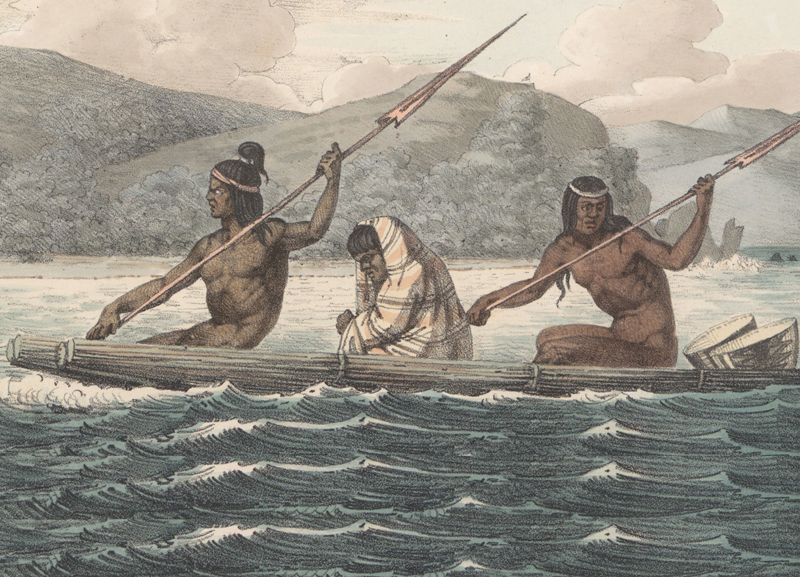
No longer silenced, Indigenous Peoples reclaiming their stories
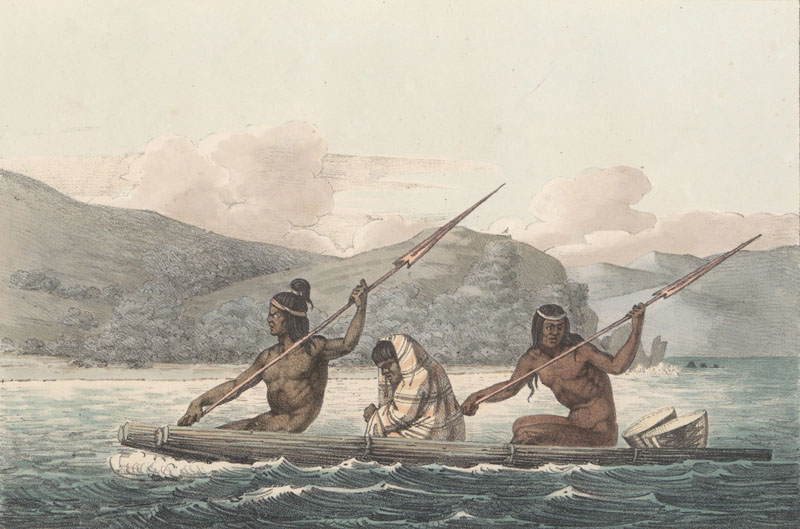
CONTRA COSTA COUNTY, CA (Nov. 11, 2021) — Much of the history of Contra Costa County’s first people – and their Indigenous perspective on the land – has been lost, suppressed or ignored over time.
However, Native Americans all over the state, and in the Bay Area in particular, are actively reclaiming and reinvigorating their cultural heritage, languages, cuisines and traditions. It’s all part of a re-indigenization movement that is being welcomed by a mainstream society more receptive to native ways of seeing the world than ever before.
There is much to learn.
Mount Diablo as hallowed ground
Every autumn for thousands of years, families from widely scattered villages gathered on Mount Diablo, called Tuyshtak by the local tribes, to harvest acorns, visit with friends, exchange news and supplies, perhaps find a marriage partner and perform ceremonial dances.
Essential items from distant tribes, like obsidian for arrow points from Napa, often passed through many hands and several tribes before being traded at a gathering.
These earliest Californians considered the top of the mountain to be sacred – as do many of the more than 5,000 Indigenous people still living in the area. Only medicine people were allowed to visit the summit to pray and perform rituals and to honor the place that most of the local tribes considered the birthplace of the world.
Descendants of the original tribes still conduct these harvest celebrations, now called Big Times. Some of the families have lived in Contra Costa County for more than 6,000 years; many scholars say even longer.
Tribes difficult to quantify
Mount Diablo is located within the homelands of two Bay Miwok-speaking tribes, the Volvon and Tatcan. Three main linguistic and cultural groups, the Bay Miwok, Ohlone and Delta Yokuts, lived in what is now Contra Costa County.
Anthropologists and linguists have commonly designated groups and culturally diverse subgroups based on the language spoken and other factors. But before European contact, the people here did not use such distinctions among themselves.
To make matters even more complex, Spanish-speaking padres or soldiers were the first to write down most of the names. So, they are often an approximation of what the tribes called themselves, if they called themselves anything at all.
Preserving the cultures
While many tribes and lineages no longer have living members, Indigenous people – through intermarriage, adaptation and incredible perseverance – have managed to endure, preserve many of their traditions and, increasingly, reclaim their heritage and bring their cultures forward into the future.
Prior to European contact, there were an estimated 340,000 Indigenous people living in California. Because of the abundance of game, plants and fish, Contra Costa County had hundreds of small villages, each with a distinct homeland and leadership.
People spoke one or more of the area’s seven primary languages, some as different from each other as, say, English and Hungarian. Only three of these languages are still spoken today, some through the efforts of tribal members recovering long-forgotten field notes, interviews with elders and recordings.
Dr. Beverly Ortiz, retired East Bay Parks cultural services coordinator and current chair of the Native California Research Institute, marvels at what she calls the “reawakening” of California Indigenous culture and traditions.
“Many languages and identities are being reclaimed; Indians are returning to their roots,” she remarked, adding: “The tragedy of colonization is that we don’t know more. So much was lost.”
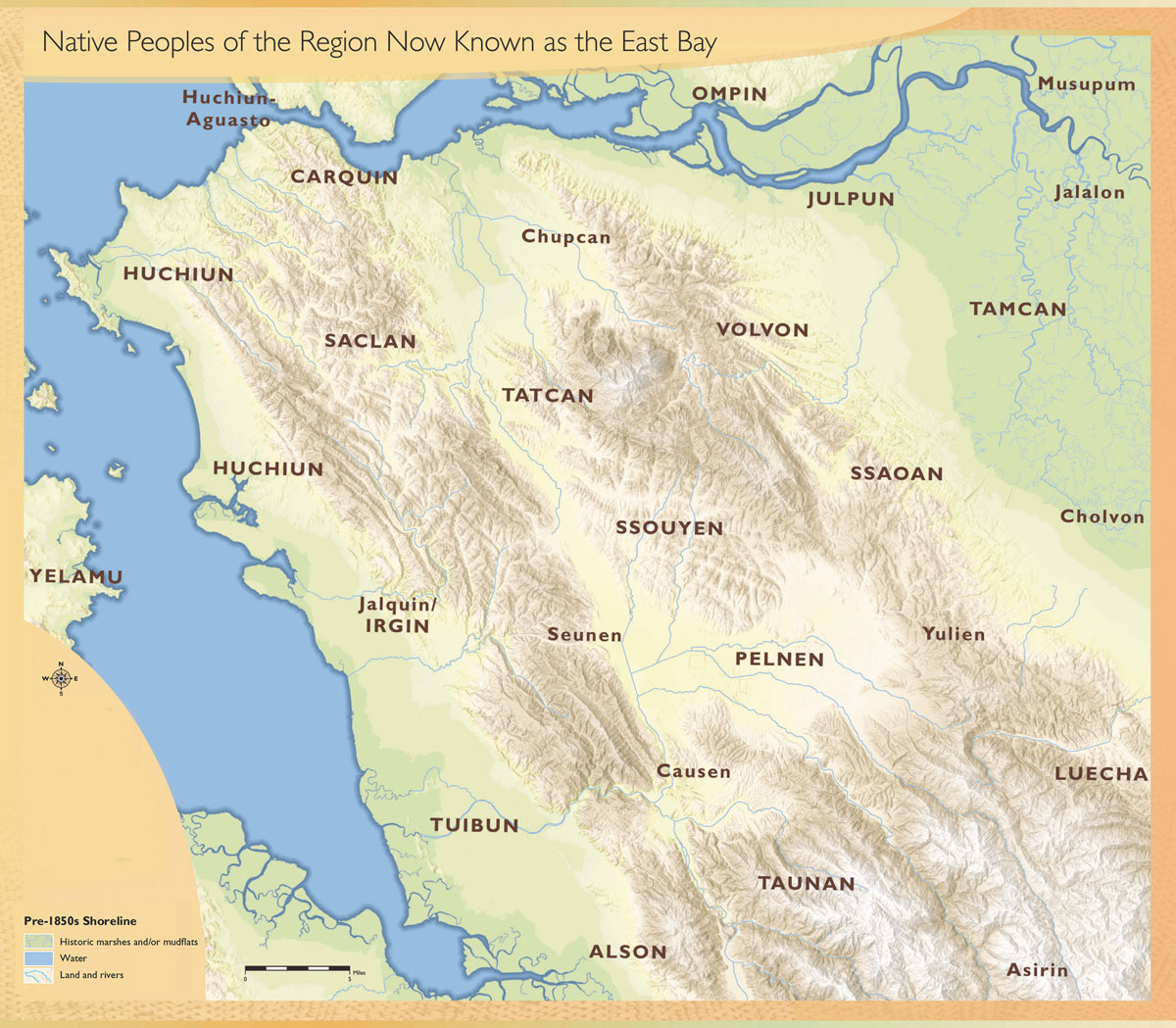
A life at one with the land
In the days before the arrival of the Spanish and then the gold-seeking hordes, animals were plentiful. Antelope, elk, grizzly bears and condors still roamed the area. Oak trees of several varieties provided the acorns that were the mainstay of their diet. They also foraged mushrooms, fungus and wild seeds. Weavers pruned sedges, rushes and other plants as material for baskets.
Fish and shellfish from Suisun Bay, the San Joaquin River and the many creeks were plentiful. Steelhead once migrated up both San Ramon and Marsh creeks until barriers were built. Walnut Creek was navigable to Pacheco until the 1860s. Boats made from bundles of tule lashed to a frame of willow saplings plied the marshes, lakes and bays.
Resourcefulness, moderation and a respect for the land and each other allowed them to maintain their way of life for generations without substantially diminishing or damaging the environment.
Native people actively managed the landscape using sophisticated horticultural and fire abatement techniques to increase habitat diversity. For example, many of the double-trunked oak trees in our area were cleaved when young to increase acorn production.
Knowledge and wisdom
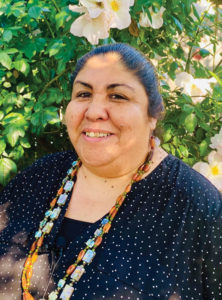
Experts study and even implement some of these land management practices today, part of a growing awareness of the long-disregarded value of Indigenous knowledge and wisdom. Several Native groups in the Bay Area are actively working with park districts, universities, government agencies and other institutions to preserve and share their history and traditions, not only for themselves but for the good of the planet.
“My ancestors have always been here,” says Corrina Gould, co-founder/director of the Sogorea Te’ Land Trust and spokesperson for the Confederated Villages of Lusjan/Ohlone.
“That’s my blessing, my grandchildren’s blessing, that they were born on the land that their ancestors have always been on. And maybe my great-grandchildren will be born here, too. Our umbilical cords are buried in this land. Our ancestors’ DNA is in this land. And we continue to stand our ground. Sometimes, when I’m on sacred ground and am very quiet, I can hear their voices and their songs.”
Native American Heritage Month
The event began as American Indian Day in 1916 after a member of the Blackfeet Nation rode across the country on horseback to garner support for the idea. President Ronald Reagan upgraded the commemoration to American Indian Week in 1986, and President George H.W. Bush extended it to the entire month of November in 1990.
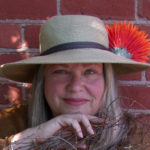
Pamela Michael
Pamela Michael is a writer and communications specialist who has lived in Curry Canyon for twenty years.
